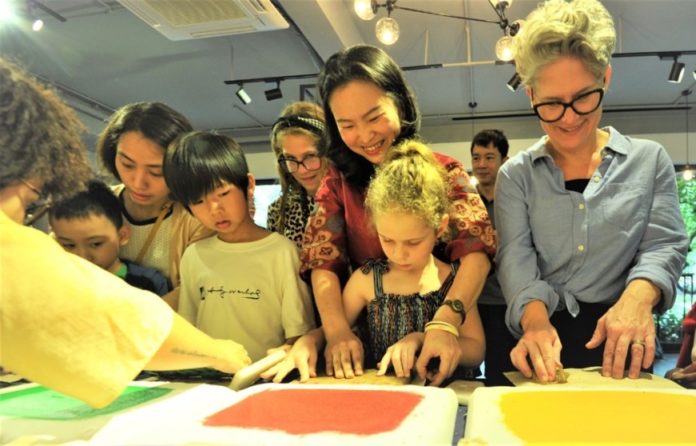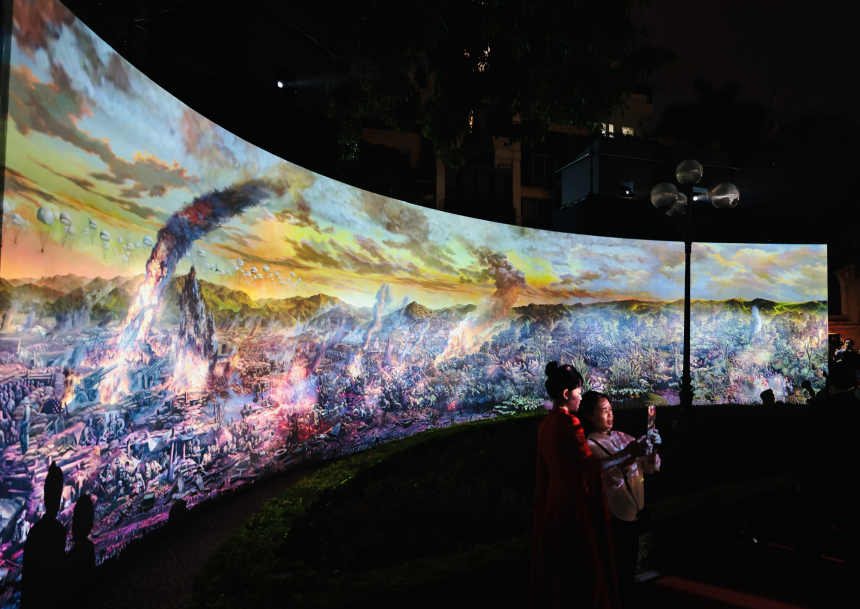It is common knowledge that many Vietnamese individuals visit Buddhist temples without fully understanding the significance of the Buddha and the statues they are praying to.
This is one of the reasons why Trang Thanh Hien, a painter from Hanoi, has devoted herself to researching the traditional culture and religion of Vietnam.
Since 1998, alongside her teaching position at the Vietnam University of Fine Arts, Hien has embarked on a passionate journey exploring ancient fine arts.
She has conducted fieldwork in nearly every temple and pagoda in the northern region, from Hanoi to Bac Ninh, Hung Yen, and Ninh Binh.
Hien’s first book, “The Image of Guan Yin of Thousand Arms and Eyes in Vietnam,” was published in 2005. It received significant recognition for its comprehensive summary and evaluation of the development of Guan Yin statue art and even received an award from the Vietnam Publishers Association.
What sets Trang Thanh Hien apart from other researchers in history, cultural heritage, and archaeology is her focus on the visual value of ancient fine arts.
Vietnam’s ancient fine arts are closely tied to communal houses, pagodas, temples, and folklore. However, the artistic values and the connection between life, society, and fine arts remain mysterious to many.
Driven by this, Hien continued to delve into the subject until she finally felt accomplished when her second book, “The Art of Creating Buddha Statues in Vietnamese Temples,” was published in 2020.
Hien noticed that many Vietnamese academics write books primarily for researchers and experts, excluding the general public. In contrast, she aimed to describe the art in the simplest way possible, accessible even to those unfamiliar with archaeology or art.
In addition to her research, Hien actively engages in painting and teaching, utilizing the experience and knowledge she has acquired throughout her years of fieldwork.
Her paintings often feature recurring motifs such as Buddha silhouettes, flowers, and energy symbols arranged in various layouts. Each painting represents a restless state of mind, filled with uncertainty about happiness or sadness, searching for direction within this spiritual realm riddled with unanswered questions.
Among all the statues she has encountered, Hien is particularly captivated by those at Mia Pagoda in Duong Lam Commune, Son Tay District, Hanoi.
“The ancient Guan Yin statue, dating back to the 17th century, is a visual artwork that evokes intense emotions within me every time I lay my eyes on it. It embodies the resilience and acceptance of Vietnamese mothers. The delicate, intricate engraving lines emanate compassion and kindness,” described Hien.
Traditionally, statues in Vietnam were predominantly crafted from wood and clay, not due to financial limitations but rather the familiarity and affability of these materials. Wooden statues offer greater freedom for creativity due to their ease of carving.
However, Hien realized that today, there is a growing trend of building large pagodas and casting enormous Buddha statues. Aside from these changes, many lack the expertise to restore damaged ancient sculptures.
Vietnamese people desire a sense of protection, familiarity, and friendliness when visiting pagodas, hence the modesty of statues in the past, explained Hien.
On November 7-15, Hien will host her solo exhibition, “Projectivity,” at the Vietnam University of Fine Arts. The exhibition will showcase 44 paintings on do (poohnah) paper, as well as sculptures deeply influenced by Buddhist philosophy.
“I liken my soul to the surface of a lake that reflects countless life events. My work represents the refraction of life’s values, incorporating not only color images, pen and ink techniques, and image-making skills, but also my extensive research on ancient art, Buddhist art, and my own soul,” shared Hien.
Associate Professor and painter Nguyen Nghia Phuong, Vice Rector of Vietnam University of Fine Arts, lauded Trang Thanh Hien for her unwavering passion for both theory and practical art.
“In this solo exhibition, she presents a comprehensive, multidimensional art that combines painting, graphics, and sculpture with familiar traditional symbols in her personal artworks,” praised Phuong.
He believes that her works embody femininity in an unpredictable spirit, oscillating between elegance and the mundane, intense movement and freedom, and serenity.




